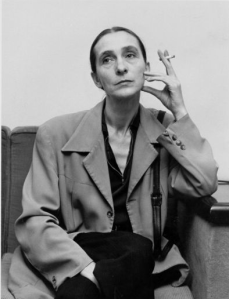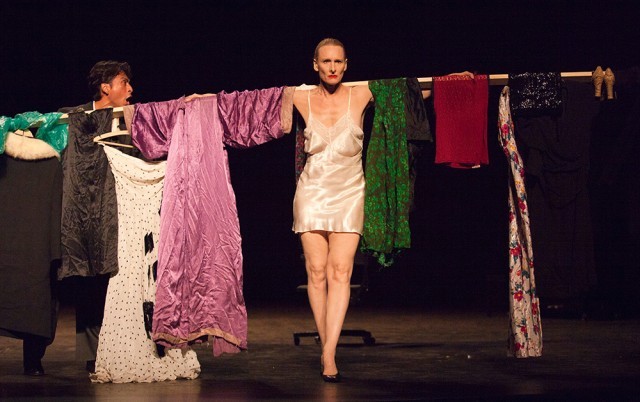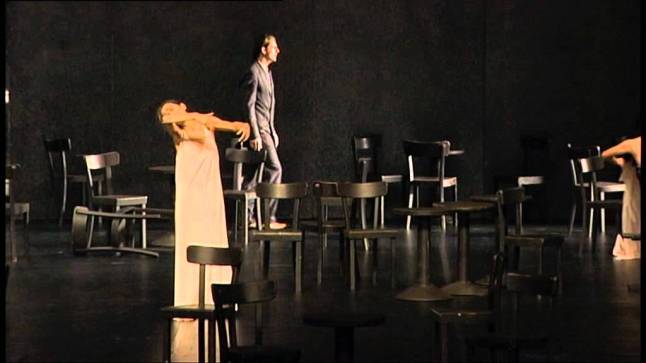Pina Bausch was a theatre practitioner, teacher, director and choreographer from Germany. She had a unique style, a good mix of movement and sounds as well as very important stage sets.
Bausch was born in 1940, Solingen, Germany. She was born into a family as the third and youngest child. Her parents owned a restaurant that gave Pina her first venue to perform in when she was very young. At just age fifteen, Bausch was accepted into Folkwang academy a university of the arts. Once she graduated in 1959 Bausch left Germany to continue her studies at the Juilliard School in New York. In 1962, Bausch joined the Folkwang-Ballet as a soloist. By 1968, Bausch had choreographed her first piece which was titled Fragments and soon after she took over as artistic director of Folkwang-Ballet. It was with this success that Bausch started her own dance company three years later as the artistic director. Her company was entitled Tanztheater Wuppertal.
It was with Tanztheater Wuppertal That Bausch made some of her most memorable work. Bausch manufactured a style that was seen as very controversial and wholly unfamiliar to the various performance arts that were around at the time. She achieved this by combining both theatre and dance. A mixture that would revolutionise the future of dance for the forthcoming generations.
I would like to discuss with the recent trend of physical theatre and it’s particularly unclear description, whether nowadays Pina Bausch’s work would fit into the bracket of Physical Theatre or Dance theatre.
In 1978, Bausch directed one of her most famous pieces; Cafe Muller, which many believe to be an interpretation from Bausch’s childhood and her explanation of living in a restaurant. Cafe Muller involves the telling of a story through the physicalization of the body. Throughout most of the piece Bausch told her performers to have their eyes closed allowing a complete focus and trusting nature from all performers involved. Throughout the piece, the performers throw themselves at walls, across the room and into each other without acknowledging the limited spaces between the cafeteria tables and chairs. Without this clumsy set, these movements wouldn’t be possible. Cafe muller contains a lot of repetitive movements as well as stillness. It also contains costumes and strong emotional responses from the performers following a dreamlike storyline.
Another of Bausch’s most famous pieces is Rite of Spring which premiered in 1975. With a stage entirely covered in soil, Bausch had her performers depicting a sacrificial female victim and the violence inflicted on her by her tribe. In order to do so the performers made fast paced expressionistic movements that resulted in the protagonist dancing to her death and the entire cast covered in soil, sweat and panting breathlessly. It was a clear and graphic interpretation of the battle of the sexes and like Bausch’s later piece Cafe Muller, it followed a dreamlike atmosphere.
A lot of Bausch’s work is so relevant to today that they are still being performed around the world, even after Pina Bausch’s death in 2009. With Bausch creating a new and invigorating style that mixes dance and theatre it is easy to see how audiences can interpret it in many different ways. Of course, Bausch was a dance choreographer so this has been a clear influence on her work. However, with a very physical style and with the amount of emotion put into her performances as well as the use of set and costume, this could be seen as a physical method to aid in the telling of a story – which would be my description of physical theatre. Although after experiencing her work, her movement is so physicalised it is difficult to see the narration, often you have to put your own interpretation on it as it is so expressionistic. Therefore, although it contains many qualities that fall into the physical theatre bracket. I will have to say that Pina Bausch leans much more towards dance-theatre.
‘It is almost unimportant whether a work finds an understanding audience. One has to do it because one believes that it is the right thing to do. We are not only here to please, we cannot help challenging the spectator.’ (Bausch, P.)
– Written by Martha King


